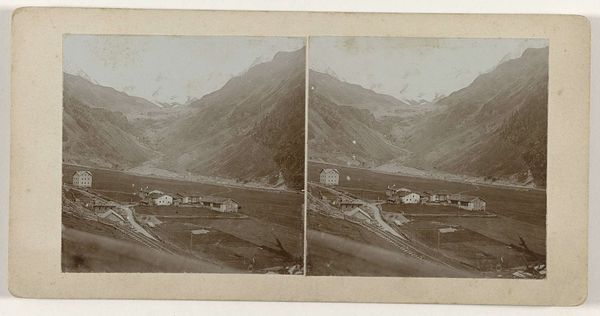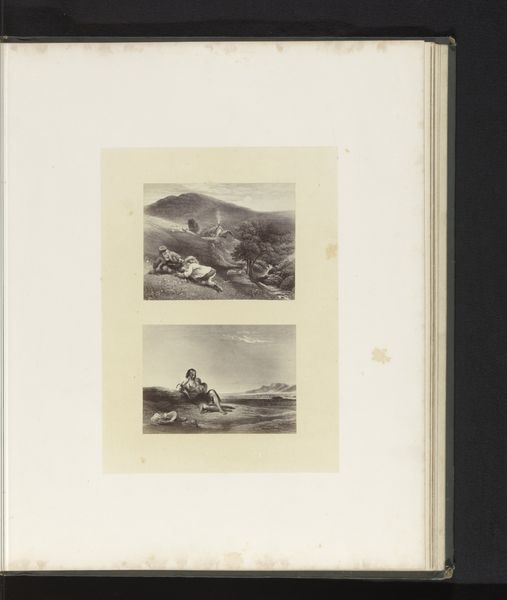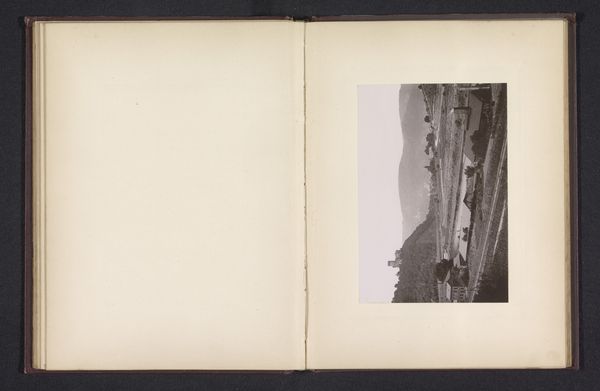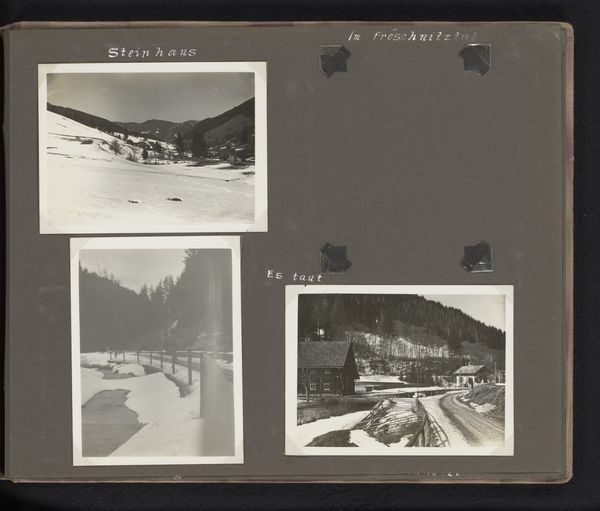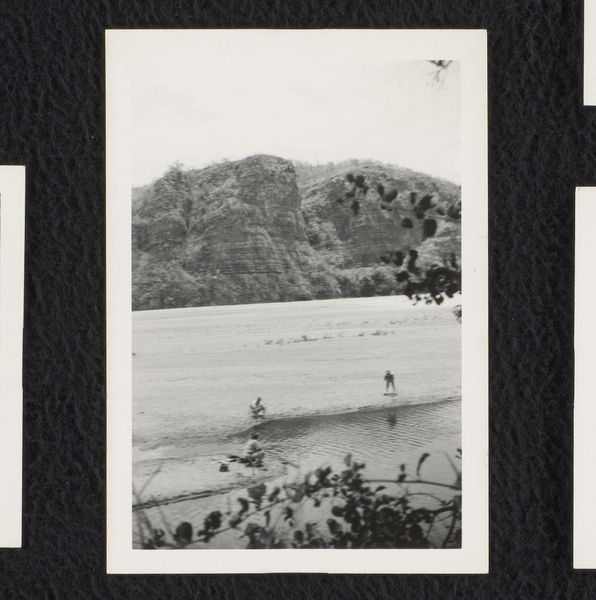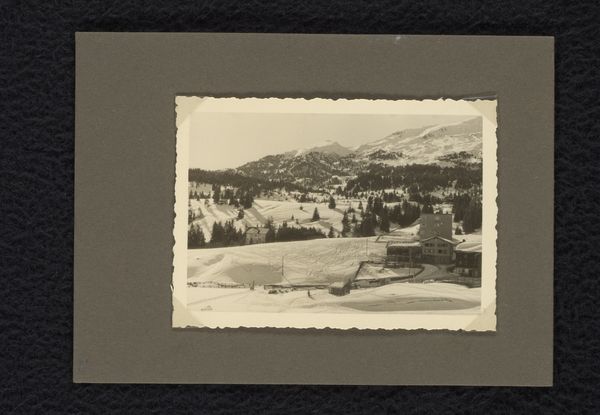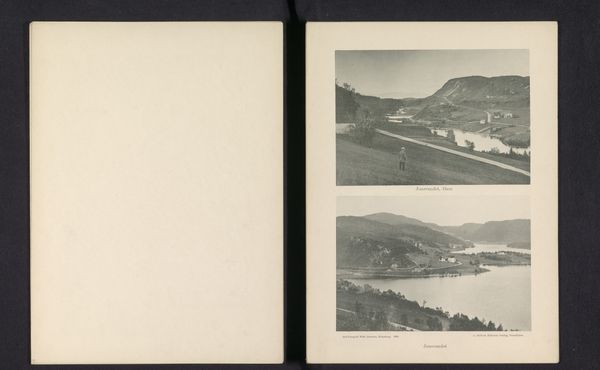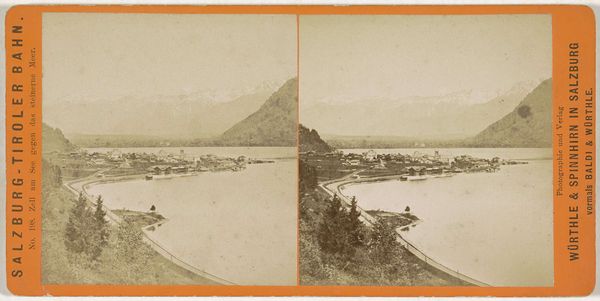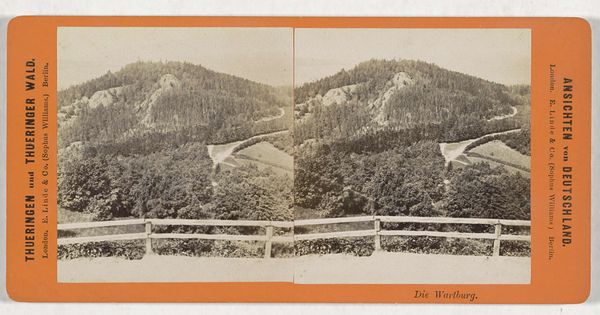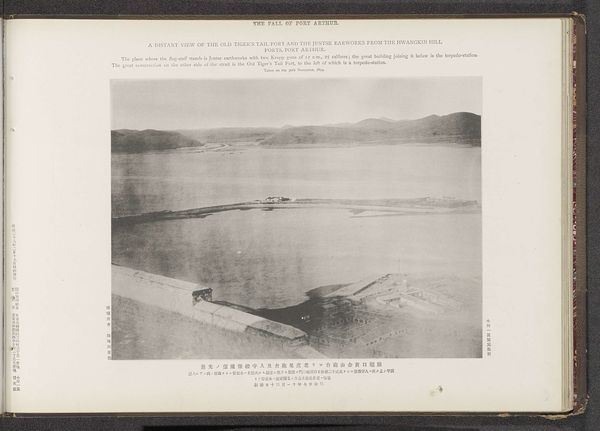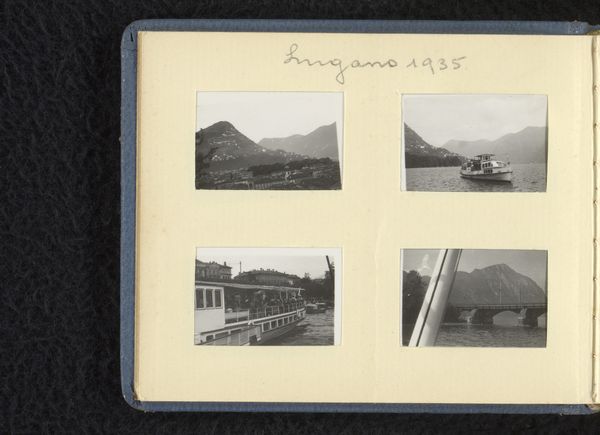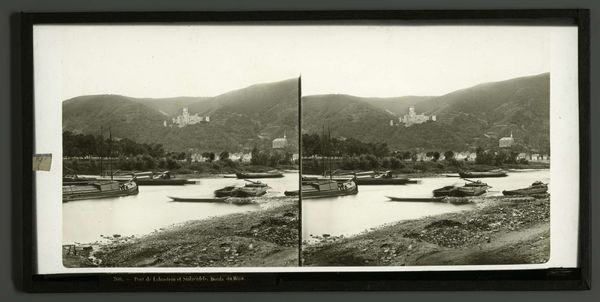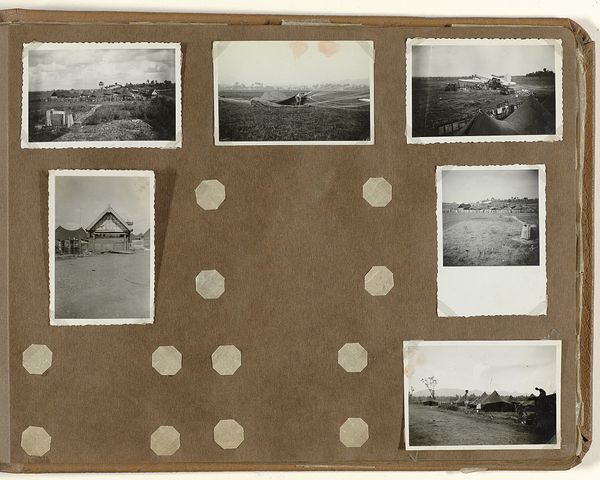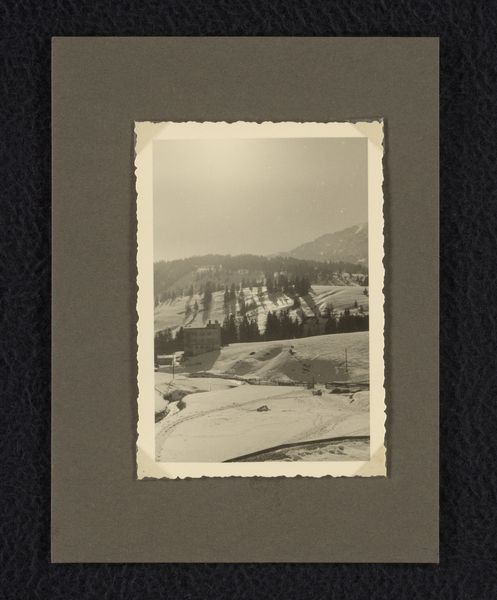
Een trein rijdt over de spoorbrug door het berglandschap van Bergün c. 1920 - 1945
0:00
0:00
geldolphadriaankessler
Rijksmuseum
print, photography
#
muted colour palette
#
pictorialism
# print
#
landscape
#
photography
#
muted colour
#
realism
Dimensions: height 80 mm, width 104 mm
Copyright: Rijks Museum: Open Domain
Curator: It’s fascinating, isn't it? There's almost a wistful quality to this one. It’s a print, a photograph by Geldolph Adriaan Kessler, titled *Een trein rijdt over de spoorbrug door het berglandschap van Bergün,* or *A train runs over the railway bridge through the mountain landscape of Bergün*, and it dates from somewhere around 1920 to 1945. Editor: There's a somber stillness about it. It's deceptively serene at first glance, but the more I look at it, the more a sense of precarity creeps in. Like something’s about to be disturbed. Curator: Yes! That muted color palette definitely lends itself to that feeling. I mean, there's this idyllic landscape, the imposing mountain, the sturdy stone bridge, and then this train cutting through it all, a symbol of progress maybe, but also intrusion. It almost feels invasive somehow, a wound upon the landscape, don't you think? Editor: Precisely. This train embodies both mobility and its implications, it quite literally, and symbolically, transports goods and capital, linking resource extraction from natural sites and markets, fueling economic exploitation. Curator: Absolutely, and think about what else a train represents. Industry, the movement of people, sometimes forced movement during that period. It carries with it so many potential narratives. It's making me think of Walter Benjamin, his writings on modernity and how progress always carries destruction with it. Editor: That disruption, that unease… it mirrors larger power dynamics, specifically capitalism’s unrelenting need to alter landscapes to serve its purpose. That figure of the person on the landscape just adds a bit of uncanny surrealism too. Almost too neat for such an invasive landscape. Curator: Oh, completely, that figure is dwarfed by the landscape, maybe a personification of our vulnerability in the face of this relentless march of… well, everything. It almost speaks to a certain human cost of progress, if you ask me, how these massive endeavors and technologies make an imprint. What it is to live amidst them all. Editor: The pictorialist style emphasizes beauty, but it also obscures the harder, often uglier realities underneath the surface, glossing over the inherent tension between the pastoral and the mechanical, perhaps to give the observer some comfort, too? Curator: I wonder if Kessler was aware of the inherent tension he was capturing, or if it was something he perceived only subconsciously. Whatever the case, he tapped into something really resonant here. It feels very appropriate to revisit that discussion nowadays too, eh? Editor: A stark reminder that we must keep interrogating these advancements, keep asking: who benefits, and at what price? What is really being accomplished? Curator: Definitely a picture that is worth far more than a thousand words, in any case!
Comments
No comments
Be the first to comment and join the conversation on the ultimate creative platform.
